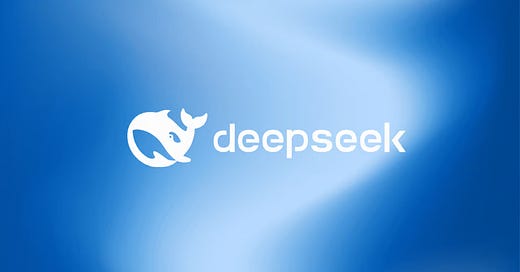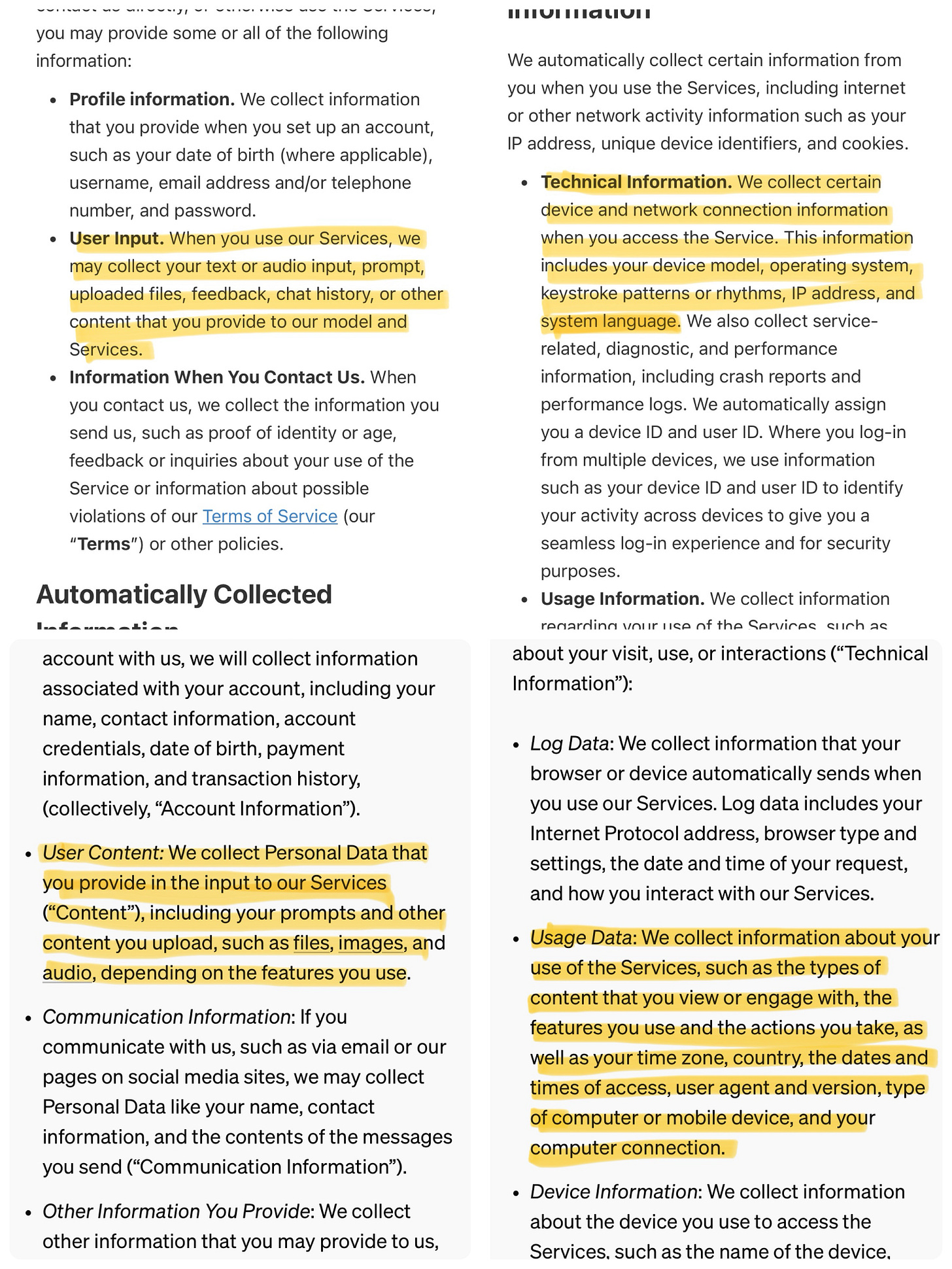AI Just Got 45x Cheaper—And It Might Be Nvidia’s Biggest Threat Yet
DeepSeek built a GPT-4-level AI for just $5.6M—challenging Nvidia’s dominance and rewriting the rules of AI innovation. Is this the beginning of a seismic shift in the industry?
AI just got a whole lot cheaper—and OpenAI is not happy about it.
DeepSeek, a relatively unknown Chinese AI startup, built a GPT-4-level model for just $5.6M using a fraction of the compute that OpenAI and Google burned through.
But now, OpenAI is accusing them of stealing their work through a technique called distillation—a way of training smaller models using the outputs of larger ones.
So here’s the real question:
🚨 Did DeepSeek actually out-innovate OpenAI?
🚨 Or did they just copy their way to the top?
🚨 And what does this mean for Nvidia, US-China tech wars, and the AI industry?
Let’s break it all down—the breakthroughs, the controversy, and the bigger picture.
DeepSeek’s Insane Efficiency Hack
Most AI companies spend hundreds of millions training large language models.
DeepSeek? They did it for 1/45th the cost.
How? They optimized the hell out of training.
1. Training Smarter with 8-bit Precision
Most AI companies waste compute by training models with 32-bit floating-point precision (FP32)—like paying for 4K resolution when you only need 1080p.
DeepSeek slashed costs by using 8-bit precision (FP8) from the start—instead of training in high precision and compressing later like OpenAI.
✅ Uses less memory → fewer GPUs required
✅ Processes faster → shorter training cycles
✅ No quality loss
This alone cut their compute needs dramatically. But that’s not where the controversy starts.
2. The AI Shortcut? Training on OpenAI’s Work
Now here’s where things get messy.
OpenAI is accusing DeepSeek of distilling knowledge from its proprietary models—essentially, letting OpenAI do the expensive human training and then siphoning off the results.
💡 Distillation is a common AI technique:
A smaller model learns from a bigger one, copying its outputs.
It makes AI cheaper and more efficient.
But if you do it on a competitor’s proprietary model, it’s a legal and ethical gray zone.
And OpenAI thinks that’s exactly what DeepSeek did.
🚨 Evidence?
OpenAI and Microsoft reportedly caught DeepSeek-linked accounts exfiltrating massive amounts of data using OpenAI’s API.
Some AI experts noted DeepSeek’s models seem too similar to GPT-4’s outputs.
DeepSeek hasn’t responded to the accusations.
If OpenAI pursues legal action, this could get ugly fast.
3. The Real Breakthrough: Multi-Token Prediction
Let’s assume for a second that DeepSeek didn’t cheat.
They still made massive technical breakthroughs—like optimizing how AI models predict words.
Traditional models generate one token at a time.
DeepSeek predicts multiple tokens in one go, drastically speeding up inference.
✅ 85-90% accuracy in multi-token predictions
✅ Cuts API costs for businesses using AI
✅ Makes chatbots and AI assistants way faster
So even if OpenAI’s claims are true, DeepSeek is still building on serious technical chops.
4. AI That Actually Thinks Before Responding
Most AI models waste a ton of energy trying to reason through problems.
DeepSeek’s R1 model fixes that by:
✅ Using extra compute only when needed
✅ Self-checking its own answers
✅ Minimizing hallucinations
This isn’t just a more efficient way to run AI—it’s a fundamental shift toward AI models that actually “think” before answering.
What This Means for AI, Nvidia, and the US-China Tech War
1. Nvidia’s AI Gold Rush: The Bubble Nobody Wants to Admit
For two years, Nvidia was untouchable.
AI’s biggest winner. The golden goose. The kingmaker.
Their GPUs weren’t just chips—they were the currency of the AI revolution. Startups, hedge funds, tech giants—everyone was throwing billions at Nvidia like they were the last supplier of water in a desert.
And then? DeepSeek changed everything.
💥 Nvidia’s stock plunged 17% overnight.
💰 $589 billion wiped off its market cap.
📉 Microsoft, Google, Oracle—all took a hit.
Because here’s the truth no one saw coming: AI doesn’t need infinite GPUs to advance anymore.
DeepSeek just built a GPT-4-level model for $5.6 million—using a fraction of the compute.
If that’s real, the whole Nvidia-led AI economy might be one big hallucination.
The Dot-Com Bubble All Over Again
Back in 1999, investors thought the internet would change everything overnight.
They weren’t wrong. The internet was revolutionary.
But they forgot one crucial thing: Not every company riding the wave would survive.
They pumped billions into anything with a ".com" in its name. Pets.com, Webvan, eToys—companies with no business model, no profits, just hype.
And when the bubble popped? $5 trillion vanished.
🚨 Many companies, including Cisco and Amazon lost nearly 90% of its value.
🚨 Only the strong—Amazon, eBay, Google—made it through.
Fast forward to 2024, and AI feels eerily similar.
The assumption has been simple: More GPUs = Better AI.
Nvidia printed money because everyone believed AI needed more and more compute to get smarter.
But DeepSeek just cracked that assumption in half.
If AI companies can build frontier-level models with 1/45th the cost, Nvidia’s “infinite demand” dream might not be so infinite after all.
Warren Buffett Saw This Coming a Mile Away
Buffett has a golden rule: “You only find out who’s swimming naked when the tide goes out.”
And right now, Nvidia’s dominance is being tested—and DeepSeek just sent the first wave.
Here’s why:
1️⃣ Their whole business is built on the idea that AI will always need more GPUs.
2️⃣ DeepSeek just proved that’s not necessarily true.
3️⃣ If AI can get better with efficiency rather than brute force, Nvidia's moat starts cracking.
This doesn’t mean AI is dead. Just like the internet didn’t die after the dot-com bust, AI isn’t going anywhere.
But not every company in the AI gold rush is going to survive.
2. China’s AI Ecosystem Is Exploding—And It’s Not Just DeepSeek
DeepSeek is making headlines. But in China, it’s not the only game in town.
A hedge fund friend in China told me that Kimi.ai and Doubao (Bytedance’s AI model) are taking off.
While the Western media is obsessed with DeepSeek’s breakthrough, these models are quietly reshaping AI adoption in China. And unlike OpenAI or Google’s models, they don’t have to play by US rules.
Why Kimi.ai Is a Big Deal
Most people haven’t heard of Kimi.ai, but in China, it’s one of the fastest-growing AI chatbots.
Here’s why:
Longer context windows – Kimi can process up to 200,000 characters, but up to 2 million Chinese characters at a time. That’s longer than GPT-4 Turbo and means it can read full books, analyze legal contracts, or summarize complex research in a single go.
China’s data advantage – While OpenAI faces lawsuits for scraping content, Kimi has a treasure trove of localized Chinese-language data that Western models struggle to match.
Bottom line? Kimi.ai isn’t just a ChatGPT clone. It’s optimized for China’s digital ecosystem, and that’s what makes it dangerous to OpenAI.
Bytedance’s Doubao—The AI Chatbot Nobody Saw Coming
TikTok’s parent company, Bytedance, is more than just a social media giant. It’s quietly becoming one of the biggest players in AI.
Doubao is its secret weapon.
Unlike traditional chatbots, Doubao is built for engagement, not just information.
Here’s why it’s growing fast:
It’s free and frictionless – No sign-ups, no subscriptions. Just integrated directly into Douyin (China’s version of TikTok).
It’s optimized for short-form content – Unlike GPT-4, which leans toward long-form answers, Doubao is designed for quick, snappy interactions. Perfect for a generation raised on short-form video.
AI-powered e-commerce – Bytedance is turning AI into a sales machine. Doubao doesn’t just chat—it recommends products, pushes ads, and drives purchases.
Think about it. Bytedance already has one of the most addictive social media algorithms on the planet. Now, it’s training an AI chatbot to make it even more engaging.
That’s a nightmare scenario for companies trying to compete in AI-powered social commerce.
China’s AI Edge—Bypassing US Export Controls
The US government thought restricting Nvidia’s AI chips would slow China down. That was the whole point of the export bans.
Turns out? China found a workaround.
Efficiency over brute force – DeepSeek, Kimi, and Doubao are proving that AI can be trained on fewer GPUs with smarter engineering.
Open-source advantage – Instead of relying on proprietary models like GPT-4, China is piggybacking off open-source alternatives (like Meta’s Llama) to develop its own cutting-edge systems.
Scaling AI on lower-end hardware – Even without top-tier Nvidia chips, Chinese engineers are figuring out how to optimize performance.
If China can keep pace with US AI development without access to the best chips, then export controls become a lot less effective.
The Bigger Picture—China’s AI Playbook is Working
Here’s the reality:
While US AI development is concentrated in a handful of companies (OpenAI, Google, Anthropic), China’s approach is decentralized and aggressive.
DeepSeek is just one piece of the puzzle. Kimi.ai, Doubao, and countless other Chinese AI startups are rapidly iterating and improving.
Bytedance alone is a major threat. It’s got:
The best recommendation algorithms in the world.
Billions of users.
A government that wants it to win.
And now, it has AI models integrated directly into its platforms.
If you think OpenAI and Google have already won the AI race, think again.
China’s AI revolution isn’t coming.
It’s already here.
3. AI’s New Geopolitical War: Export Controls
The US has been tightening export controls on AI chips to slow China’s progress.
The logic? If China can’t get the chips, they can’t train the best AI models.
But DeepSeek’s success raises a question:
What if China doesn’t need high-end US chips to compete?
Some key points:
DeepSeek’s model is on-trend with global AI cost reductions (not some crazy outlier).
The real danger isn’t today’s AI—but 2026-2027 AI, when models become superhuman.
China still needs millions of chips to reach US levels.
So should the US tighten export controls even more?
If China gets millions of high-end AI chips, we enter a the world—where both the US and China race toward superintelligent AI.
If China can’t get those chips? The US might keep a major tech advantage.
So Did DeepSeek Cheat or Not?
Right now, we don’t know for sure.
🚨 If OpenAI’s claims are true:
DeepSeek stole knowledge to leapfrog ahead.
Legal battles could slow down their rise.
US regulators might crack down on China-based AI labs.
🚀 If OpenAI’s claims don’t hold up:
DeepSeek is the biggest disruptor AI has ever seen.
Nvidia’s golden era of infinite GPU demand might be over.
AI just got a whole lot cheaper for everyone.
Either way, DeepSeek has already changed the game.
Final Thought: The Future of AI Just Got Messier
For the last two years, AI progress has followed a simple formula:
💰 More money →
🔥 More compute →
📈 Better AI models
DeepSeek just broke that equation.
Now the industry has to rethink everything—from how we train AI to who actually owns the knowledge inside these models.
And Nvidia? They better be watching closely.
Note: Whenever you use any AI assistant, remember to read the privacy policies carefully before using those services. Below are the ones of Deepseek (top two) and of ChatGPT (below two). You might notice the difference between the two services.





